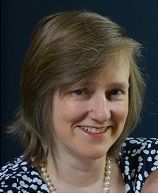Drugs and LVADs Reversed Heart Disease
Left ventricular assist devices are usually associated with keeping patients alive while they wait for a heart transplant. Using the devices with aggressive drug therapy enabled some patients to recover heart function and forgo the pumps.

Left ventricular assist devices are usually associated with keeping patients alive while they wait for a heart transplant. These pumps are almost always removed only when these patients get a new heart, or die.
A new study found that when patients are given the right drugs LVADs can serve as a bridge to healing and later removed.
In findings presented at the American Heart Association Scientific Sessions 2016 a research team said they had used LVADs in combination with an aggressive drug regimen to get heart patients healthy enough to have the devices removed. The lead author was Emma Birks, MD, a professor of medicine at the University of Louisville, Louisville, KY.
The multi-center team enrolled 40 patients (about two-thirds of them men, average age 34) at six different centers. All had very advanced or end-stage heart disease.
They were so sick that three patients died before they could get the therapy.
As is typical with LVAD use, all patients were either awaiting a transplant or expected to have an LVAD for the rest of their lives.
The drug regimen changed that, Birks (Photo by AHA) reported.
After being given lisinopril 40 mg, spironolactone 25 mg, digoxin 125 mic, losartan 150 mg daily and coreg mg BID, most of the patients had improved heart function.
Thirteen patients recovered enough to have the LVAD removed. Of the remaining subjects, 20 patients are still getting the therapy and two are scheduled to have the pumps removed.
“This suggests that even very advanced heart failure can be reversed using these heart pumps, particularly when combined with additional drug therapy,” Birks said.
Two patients received heart transplants; one died while on the LVAD.
Birks said that the fact that the regimen worked in six centers showed it could be made more widely available.
The research was funded by St. Jude Medical.